Even though there aren’t many gray things in nature, we managed to create a visual list of gray animals, plants, rocks, and other things that are gray. Let’s discover them!
Gray is the color of neutrality that provides a balance. As a mixture of black and white, there are many shades of gray.
However, how many gray flowers do you know?
It doesn’t matter because we’ve prepared a list of things that are naturally gray, which contains gray rocks, animals, plants, and natural phenomena that occur in this color.
What is Associated with Gray?
The color gray is associated with maturity, wisdom, and seriousness. It is the color of intellect, neutrality, and balance.
Gray soothes and relaxes, thereby neutralizing emotions.
Gray, on the other hand, has less positive connotations, being associated with sadness and pessimism.
A Visual List of Things That Are Gray
Here’s a list of things, plants, and animals that are gray in nature.
Gray Things
The Moon
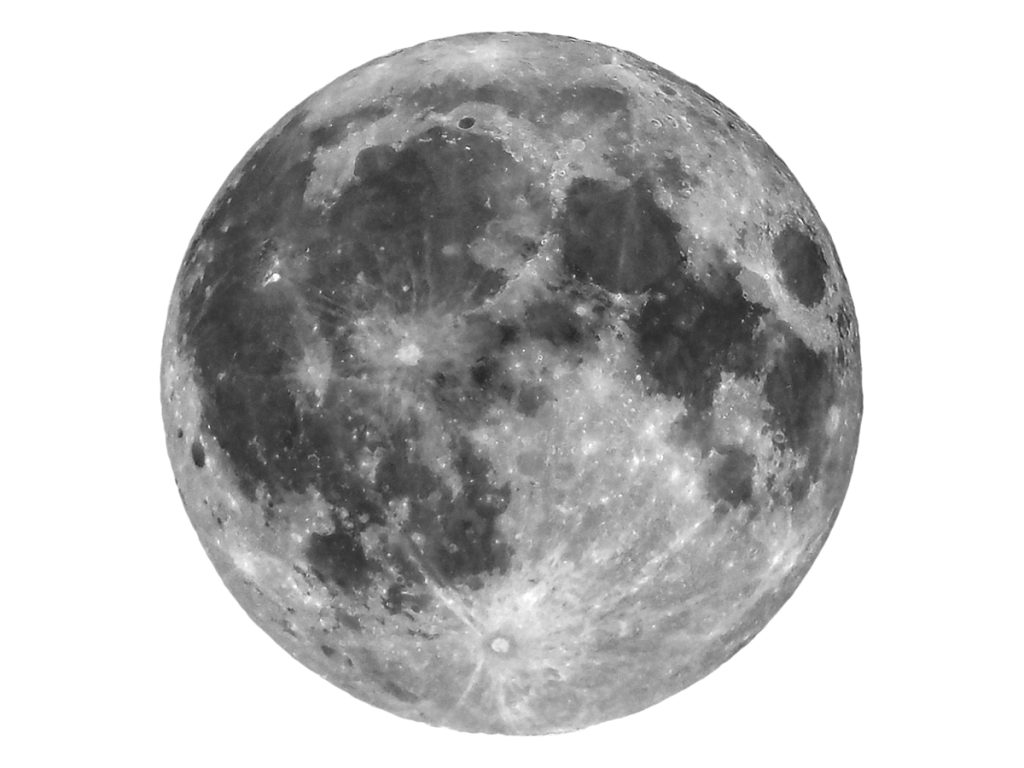
The moon – Earth’s closest celestial neighbor – is an enchanting gray presence in the sky.
This is characterized by its cratered surface, covered in a layer of fine dust known as regolith, which gives it its distinctive gray appearance.
The moon’s surface is a mix of mountains, valleys, plains, and large, round pits called impact craters, formed by ancient collisions with other celestial bodies.
The darker areas, called maria (Latin for “seas”), are large, flat regions of solidified lava thought to have formed billions of years ago.
In addition to illuminating the earth, the moon is also responsible for the rise and fall of the tides due to its gravitational pull.
Basalt
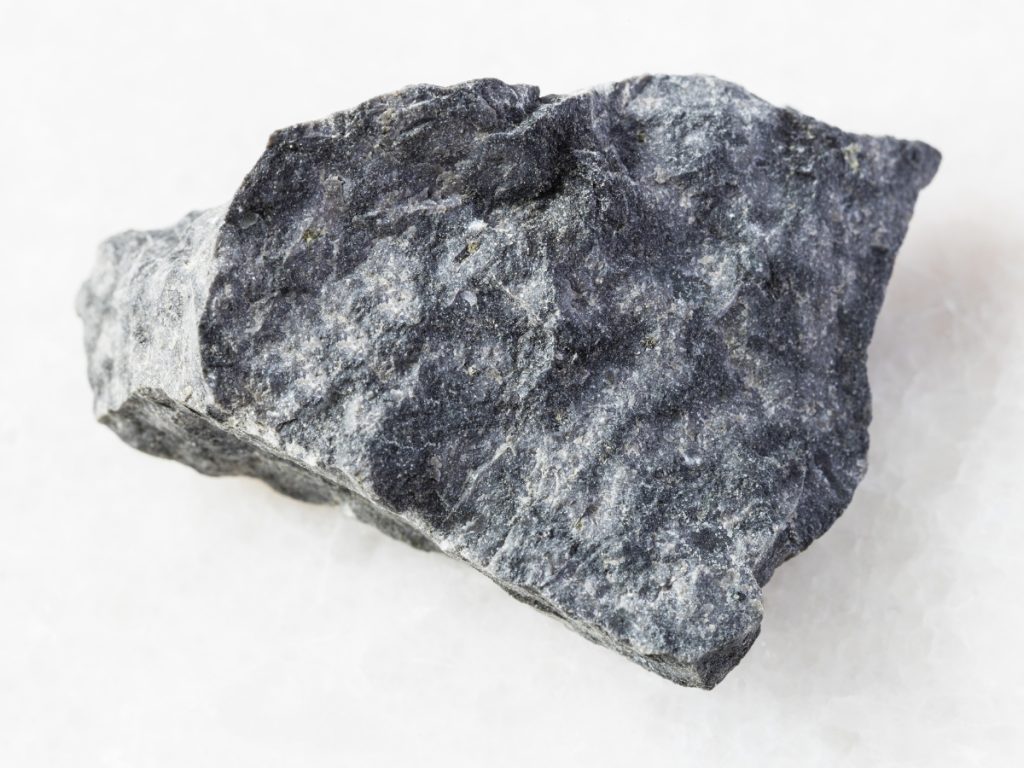
Basalt, an igneous rock characterized by its dark gray to black color, is one of Earth’s most prevalent rock types.
Basalt results from the rapid cooling of basaltic lava exposed at or very near the earth’s surface. Most basalt forms on the sea floor along ocean ridges. It can also be seen on volcanic islands but in smaller quantities.
Basalt’s composition is rich in iron and magnesium and typically low in silica, contributing to its gray-to-black color. Its fine-grained structure results from the rapid cooling of lava.
Interestingly, suppose the cooling process is slow enough. In that case, basalt can form large crystals known as phenocrysts, often of olivine or plagioclase.
Another interesting fact is that basalt plays a significant role in maintaining our planet’s climate because it can absorb carbon dioxide, one of the principal greenhouse gases, which can help mitigate climate change. [1]
Specifically, carbon dioxide combines with rainwater to form carbonic acid. When it comes into contact with rocks, it mineralizes and stores in carbonate form.
Storm Clouds
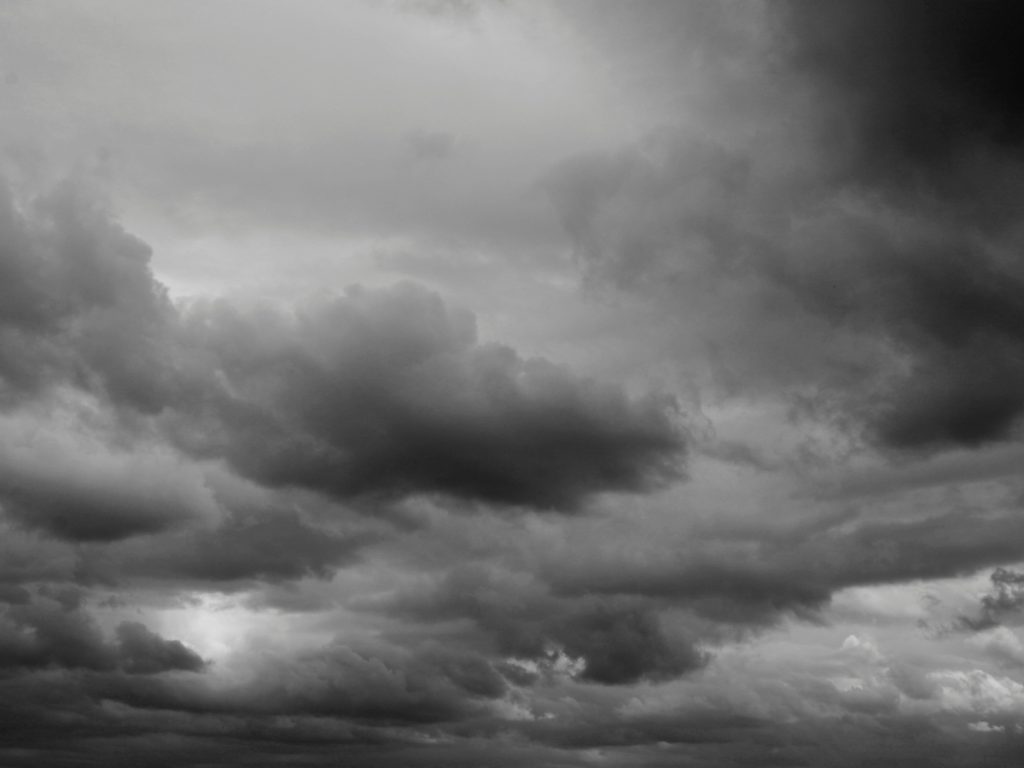
Storm clouds, technically known as cumulonimbus clouds, are a type of cloud associated with thunderstorms and rainy weather conditions.
They are characterized by their tall, towering shape and medium-to-dark gray color, resulting from their density and the amount of water vapor they contain.
Storm clouds form due to intense updrafts of warm, moist air, frequently occurring in unstable atmospheric conditions. Updrafts can lift clouds to great heights in the troposphere, sometimes even into the stratosphere.
Storm clouds appear gray or dark due to their extreme thickness and high water vapor and droplets concentration. Light is absorbed by these droplets, reducing the amount that passes through and reaches your eyes.
This type of light scattering and absorption, known as Mie scattering, is much less wavelength-dependent than Rayleigh scattering, which is responsible for the sky’s blue color.
Gabbro
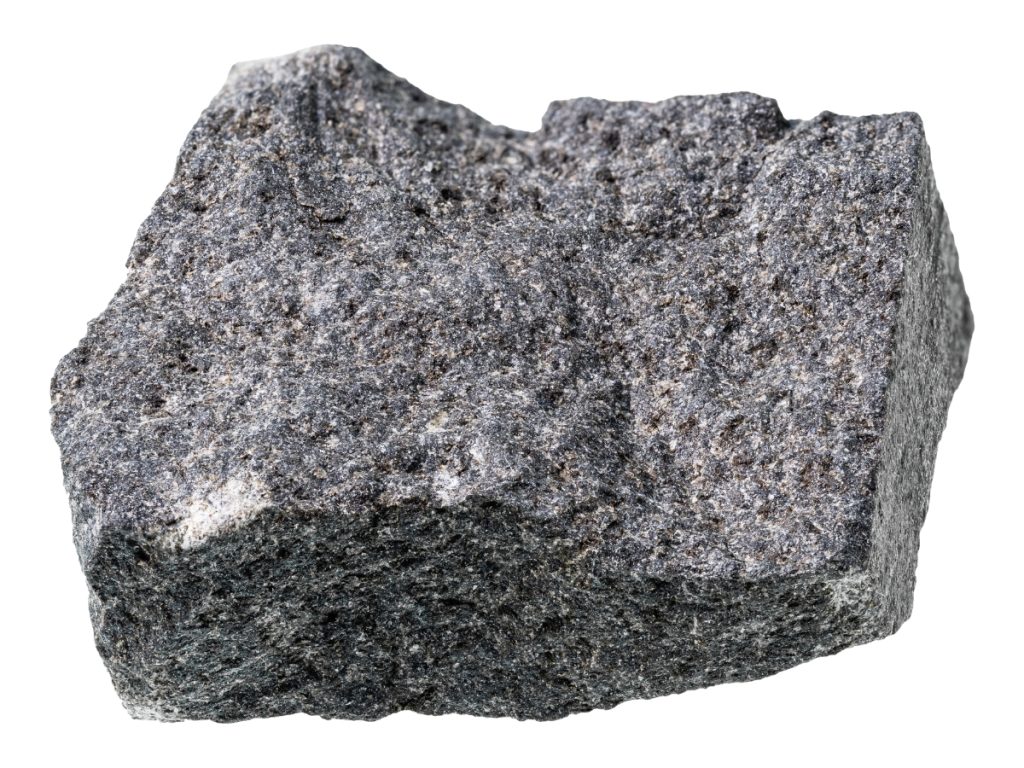
This dark magmatic rock is rich in iron, magnesium, and calcium. Unlike basalt, this rock forms when volcanic magma cools slowly beneath the Earth’s surface.
This slow cooling allows larger crystals to form, giving the gabbro its coarse grain. It is often used in the construction industry because of its durability. It stands up well to weathering.
Gray Hair
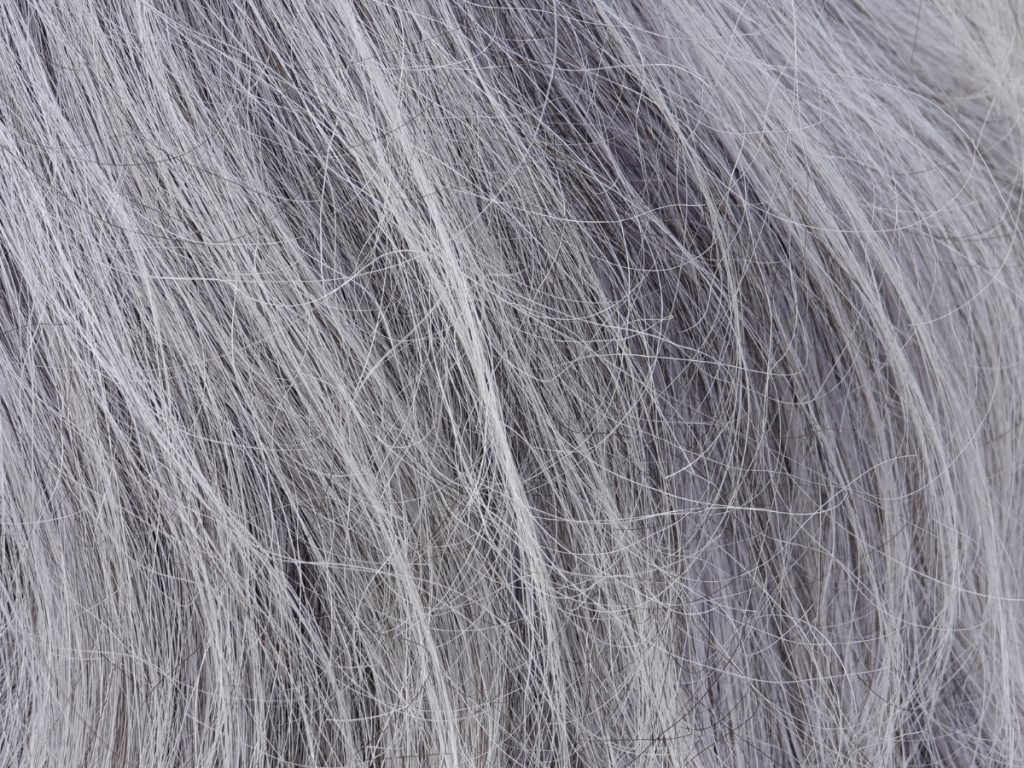
Gray hair, one of the most observable signs of aging, is an intriguing natural phenomenon rife with fascinating facts. Contrary to common belief, it isn’t actually gray but transparent – or unpigmented.
The grayish appearance is an optical illusion created by combining this colorless hair with the pigmented ones.
Human hair turns gray due to decreased melanin production. This pigment responsible for hair and skin color.
The exact timing of graying is primarily determined by genetics. Some individuals can start to see gray hair in their twenties, while others may not experience it until much later in life.
Furthermore, while stress has been anecdotally linked to the graying process, the scientific community is still exploring this correlation.
It’s also a little-known fact that gray hair is typically thicker than pigmented hair due to the restructuring of its keratin layers.
Gray Matter (or grey matter)

Gray matter is the brain’s outermost layer, hence the name. Its pinkish-gray color is caused by the neuronal cell bodies and glial cells (or non-neuron cells) from which it is formed.
Glial cells provide energy and nutrients to neurons but also cleanse the brain of chemicals.
The capillaries are responsible for the pinkish hue of the gray matter.
This one in the cerebral cortex (the brain’s outer layer) is linked to higher-level brain functions such as thought and action.
Furthermore, gray matter is fascinating because of its plasticity, which can grow and change in response to learning, exercise, or injury.
Slate
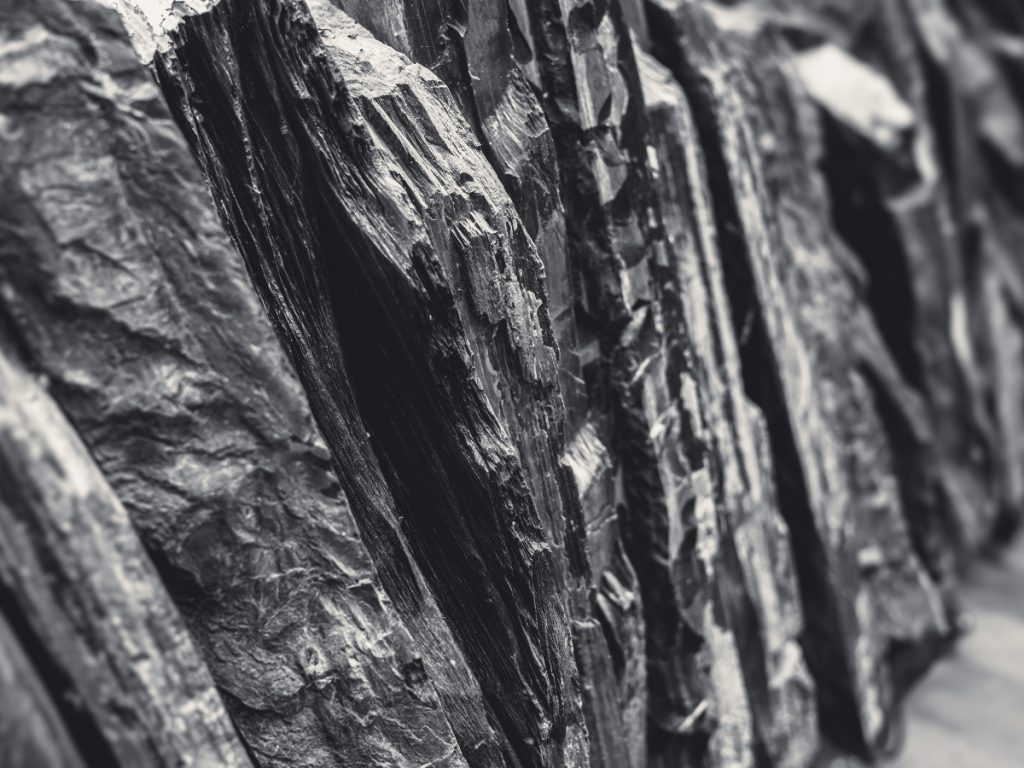
Slate is a fine-grained, foliated metamorphic rock formed by low-grade regional metamorphism of shale or mudstone.
This beautiful rock is highly valued for its strength and durability and its ability to split into thin, even layers, making it a popular choice for roofing, flooring, and landscaping.
Although slate can be greenish-gray, tan, purplish-gray, black, or dark red, it usually comes in gray shades ranging from pale to dark.
Ashes
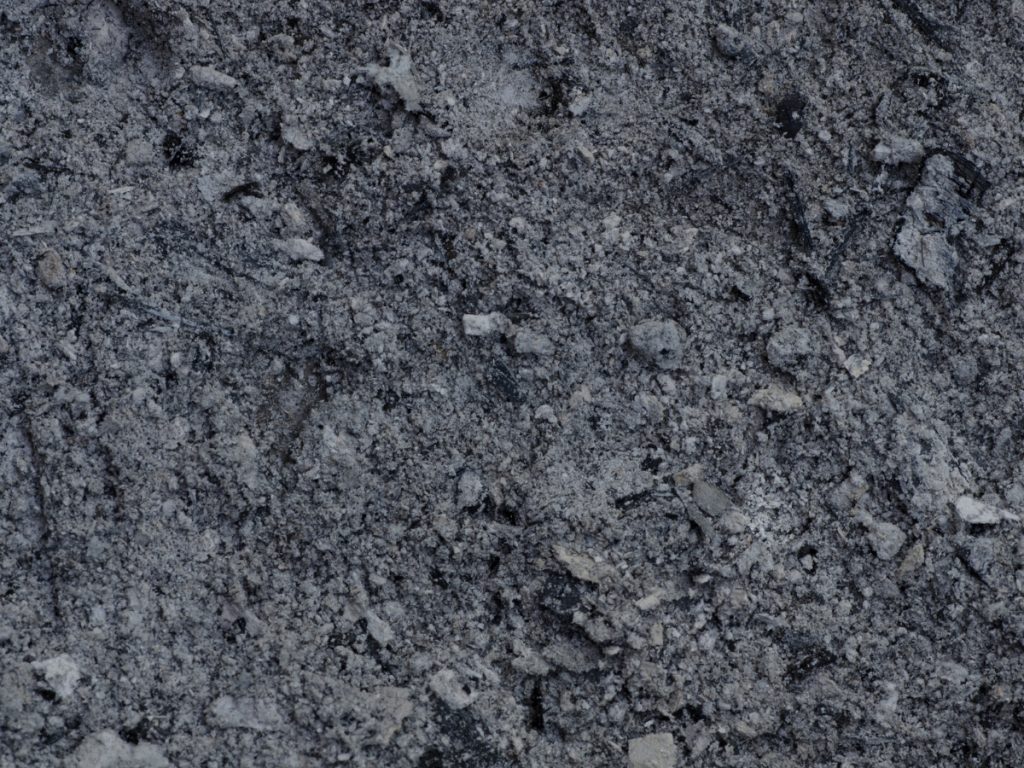
Ash is the powdery residue left after burning a substance. It has a predominantly gray color due to the presence of carbon and minerals, making it an intriguing example of gray things in nature.
From a scientific perspective, the process of ash formation involves reducing matter to its basic elements through fire, a process known as oxidation.
Ash – especially wood ash – is rich in nutrients, especially potassium and phosphorus.
In agriculture, they have been used for centuries as a fertilizer to improve crop yields. They can adjust soil pH and provide essential plant nutrients.
Interestingly, some trees, such as Australian mountain ash, need the warmth of the fire and the nutrient-rich ash it produces to germinate their seeds successfully.
Gray Agate
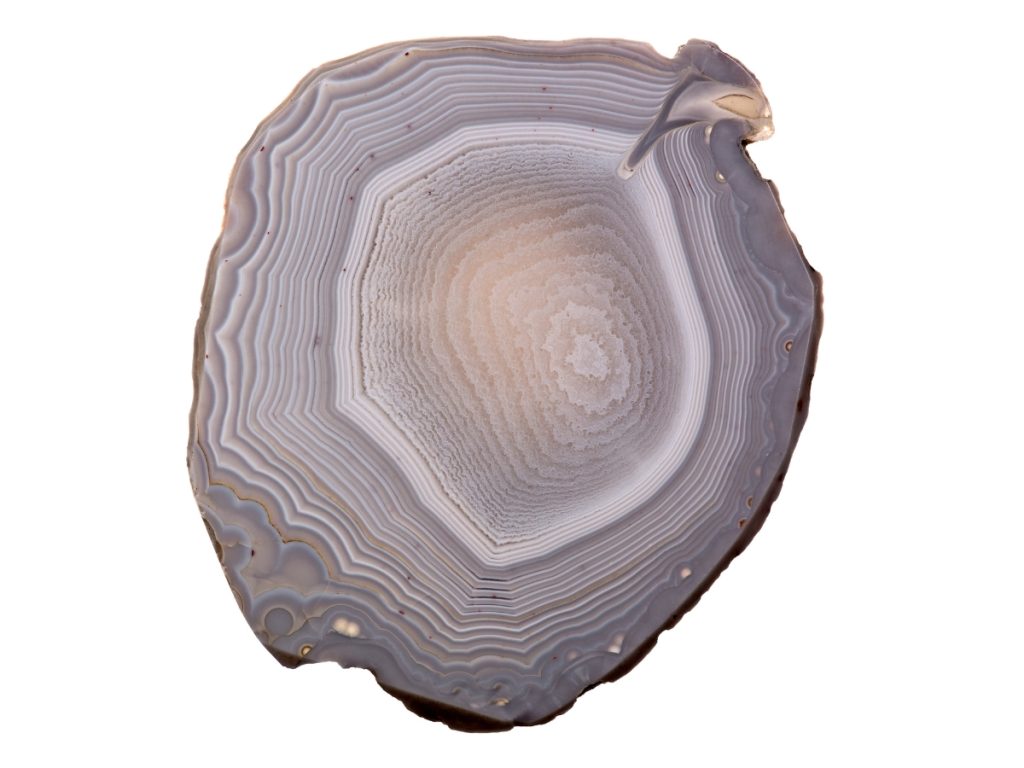
Gray Agate, a variant of the colorful agate family, is an exquisite semi-precious stone known for its bands of varying shades of gray (or gray and pink).
It forms from microscopic quartz crystals laid down in bands within igneous rocks. Most of these occur as nodules in volcanic rocks.
It is basically a variation of chalcedony – a type of quartz.
It is said to be a healing stone for balance. Thus, it is often used in jewelry and decorations.
Granite
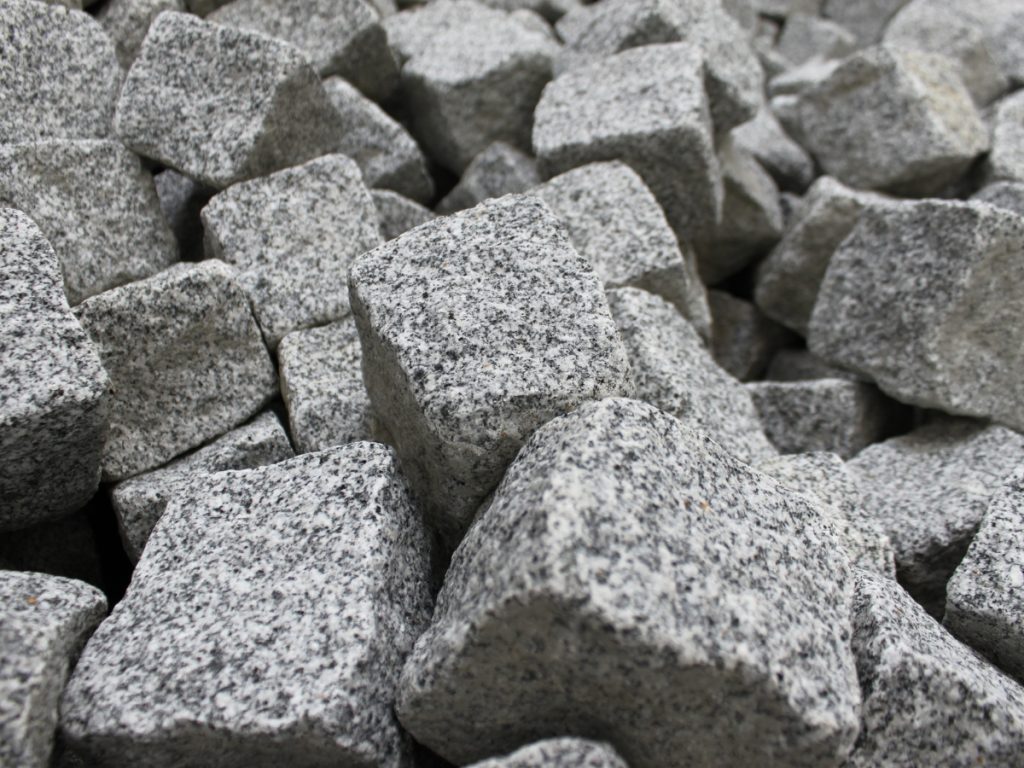
This is a common type of igneous rock that ranges in color from pink to gray. It’s formed from the slow crystallization of magma below the Earth’s surface – the slow cooling of magma.
Granite’s durability and aesthetic appeal make it popular for construction and decorative elements. It really stands up well to weather conditions.
Its coarse-grain texture is due to the presence of quartz, feldspar, and mica, which can sparkle beautifully when polished.
Native Silver
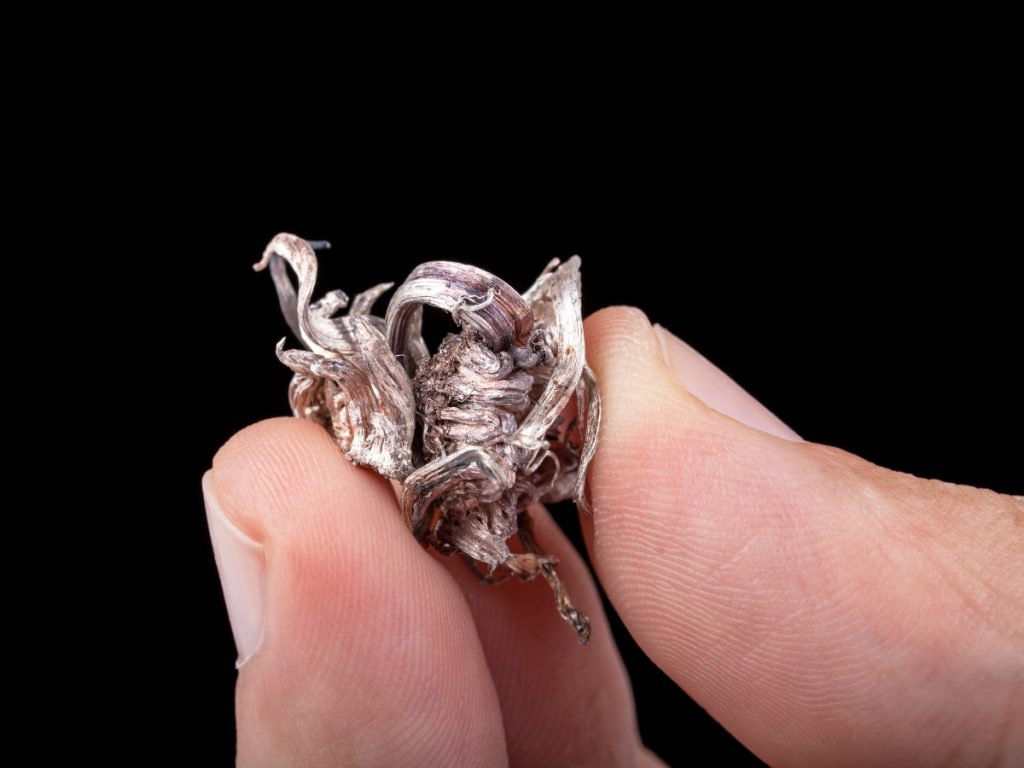
Nature silver is a mineral form of silver found as wiry, dendritic formations or irregular masses. It is basically the uncombined form of silver. However, it can also occur as crystals.
Native silver has been utilized by humans for thousands of years for both practical and ornamental purposes. But it is quite rarely discovered.
Gray Animals
Bottlenose Dolphins
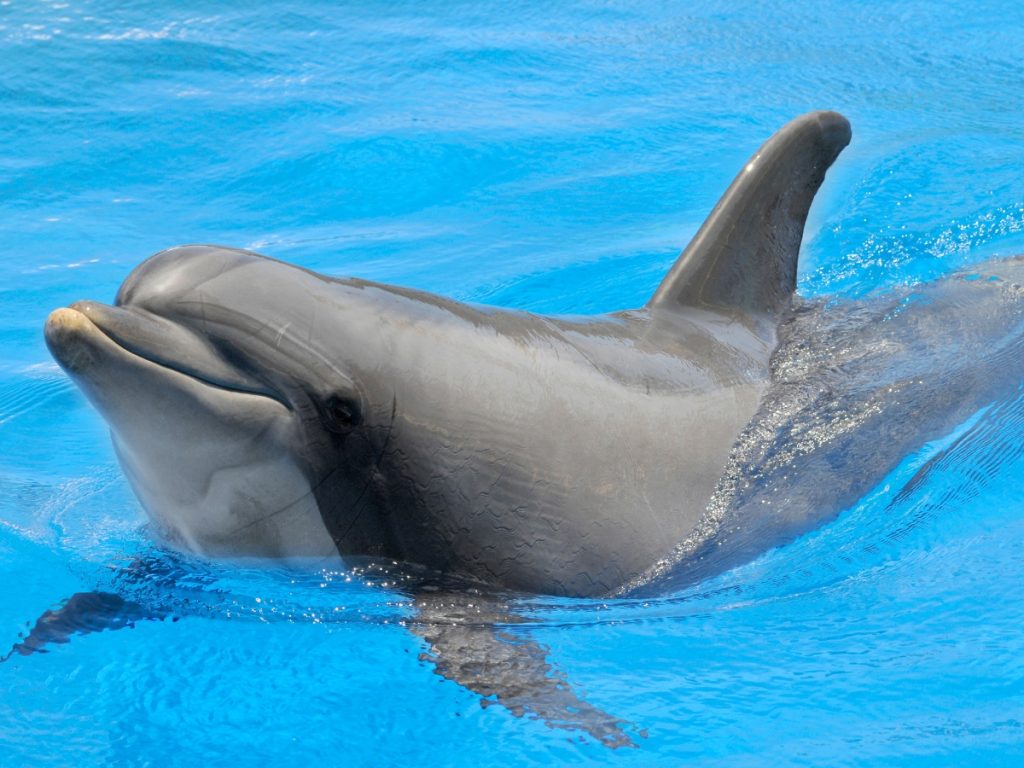
Bottlenose Dolphins are one of the most recognized and studied marine species worldwide. They live in temperate and tropical waters, only where the water temperature is between 50° to 90° F (10° to 32°C).
They can reach weights of up to 1400 pounds (640 kg) and lengths of 12 ft. (4 m).
One of the most fascinating aspects of bottlenose dolphins is their intelligence.
They’ve been seen using tools like sponges to protect their snouts while foraging on the seafloor, demonstrating their problem-solving abilities.
Another remarkable fact is their method of communication, consisting of clicks, whistles, and body movements, suggesting a sophisticated language system.
Bottlenose Dolphins also exhibit intricate social structures, forming pods of up to 1,000 individuals. These pods aren’t just social gatherings but vital for hunting, defense, and learning essential life skills.
Moreover, dolphins display empathy, altruism, and even grieving behaviors, painting a complex picture of their emotional landscape.
African Gray Parrots
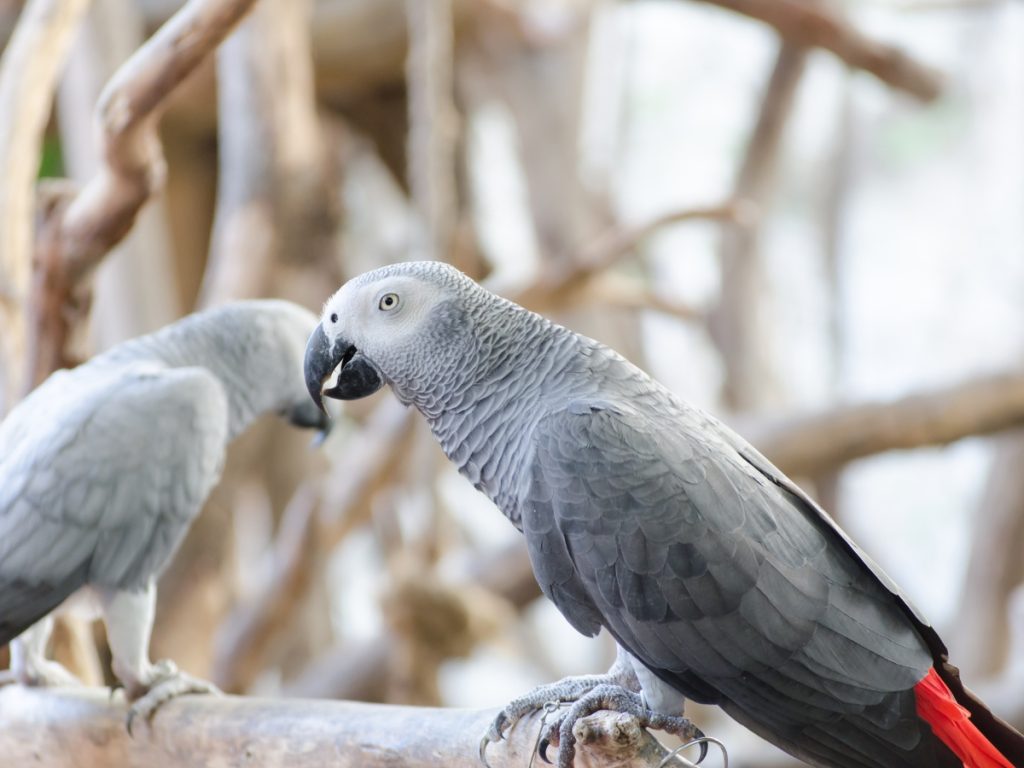
African Grey Parrots, renowned for their exceptional intelligence and speaking abilities, are among the most beautiful naturally gray birds.
Native to the dense rainforests of West and Central Africa (equatorial Africa), these birds are known for their distinctive ash-gray feathers with a striking contrast of crimson-red tails.
African Greys can be divided into two subspecies: the Congo African Grey and the Timneh African Grey, both equally adept at mimicking human speech and sounds with remarkable precision.
These parrots are known for their imitation skills; they also display cognitive abilities on par with young children, able to understand and apply human language contextually.
Some studies have shown African Greys solving complex problems, even demonstrating a basic understanding of ‘zero’ – a concept children grasp around the age of three or four. [2]
Greyhounds
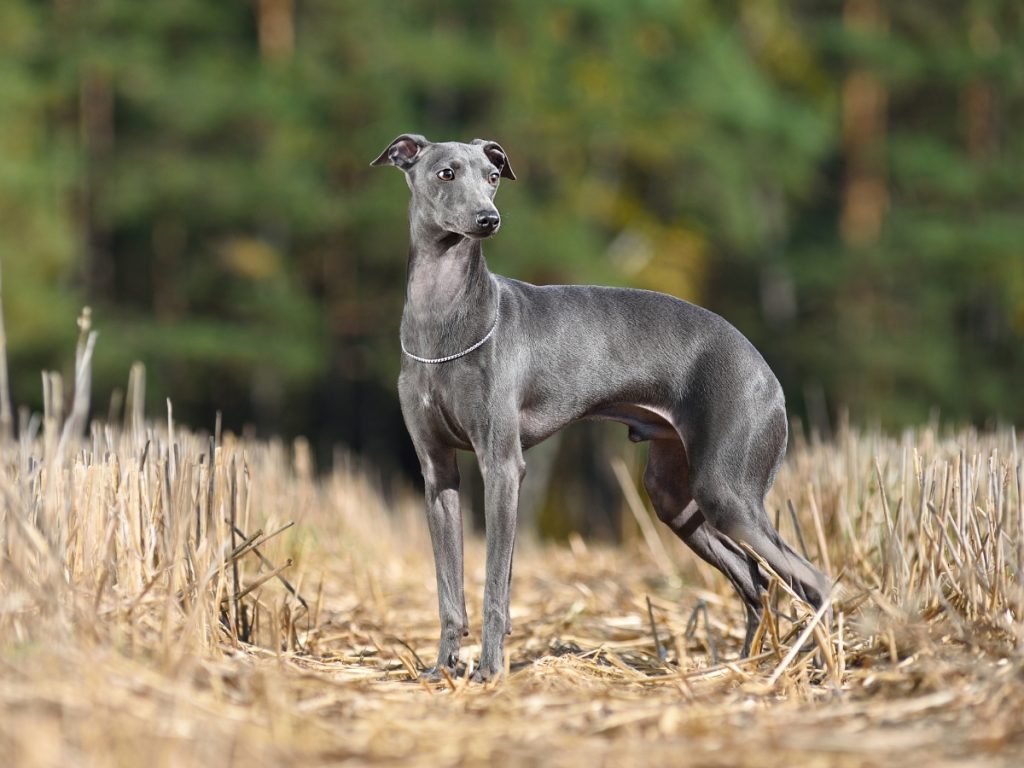
Greyhounds are one of the most ancient dog breeds known to humans. They are best recognized for their extraordinary speed and agility, being capable of reaching speeds up to 45 miles per hour. [3]
To give you an idea, they run almost as fast as a lion. This makes them the fastest breed of dog and one of the fastest animals on land.
Beyond their physical prowess, greyhounds also possess a calm and gentle temperament, making them excellent companions.
Secretary Birds
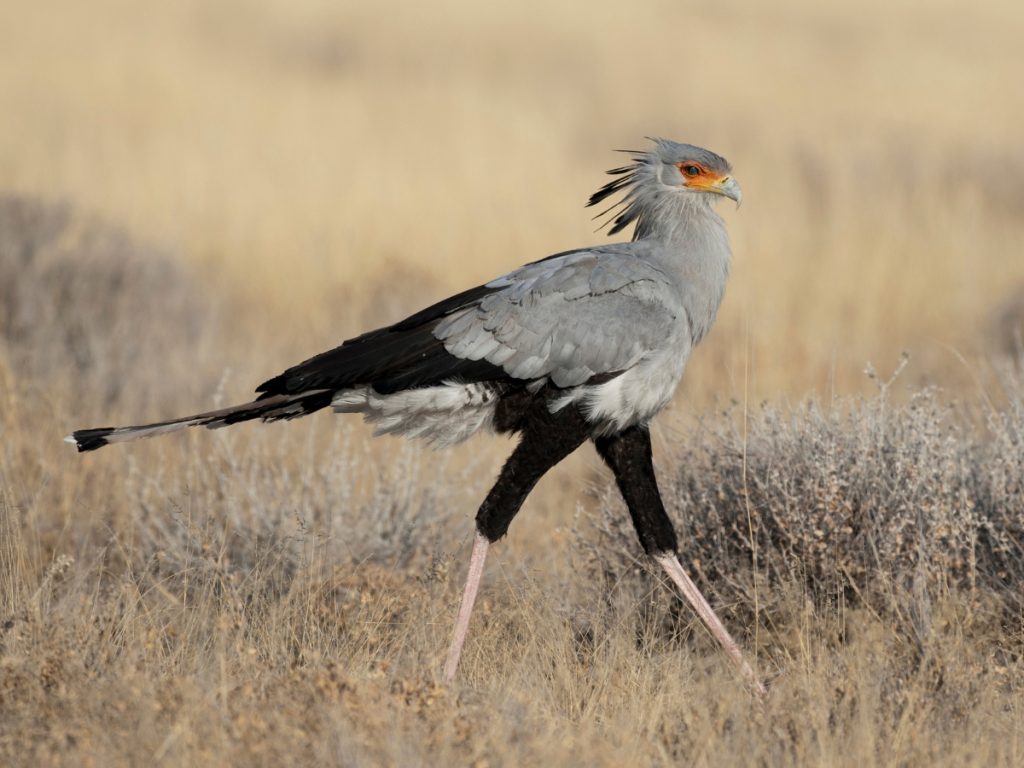
Secretary Birds, distinctive for their long, crane-like legs and strikingly beautiful gray and black plumage, are among the most iconic bird species native to the open grasslands of sub-Saharan Africa. This unique bird stands out not only for its appearance but also for its impressive hunting skills.
The secretary bird can reach up to 1.3 meters (over 4 feet) tall, largely due to its long legs, making it the tallest raptor in the world.
The body and wings are predominantly gray, complemented by black flight feathers and a crest of long black quill-like feathers on the back of its head.
This peculiar feathered crest gave rise to the bird’s name, as it was thought to resemble the quill pens that 19th-century office secretaries would tuck behind their ears.
Bobcats
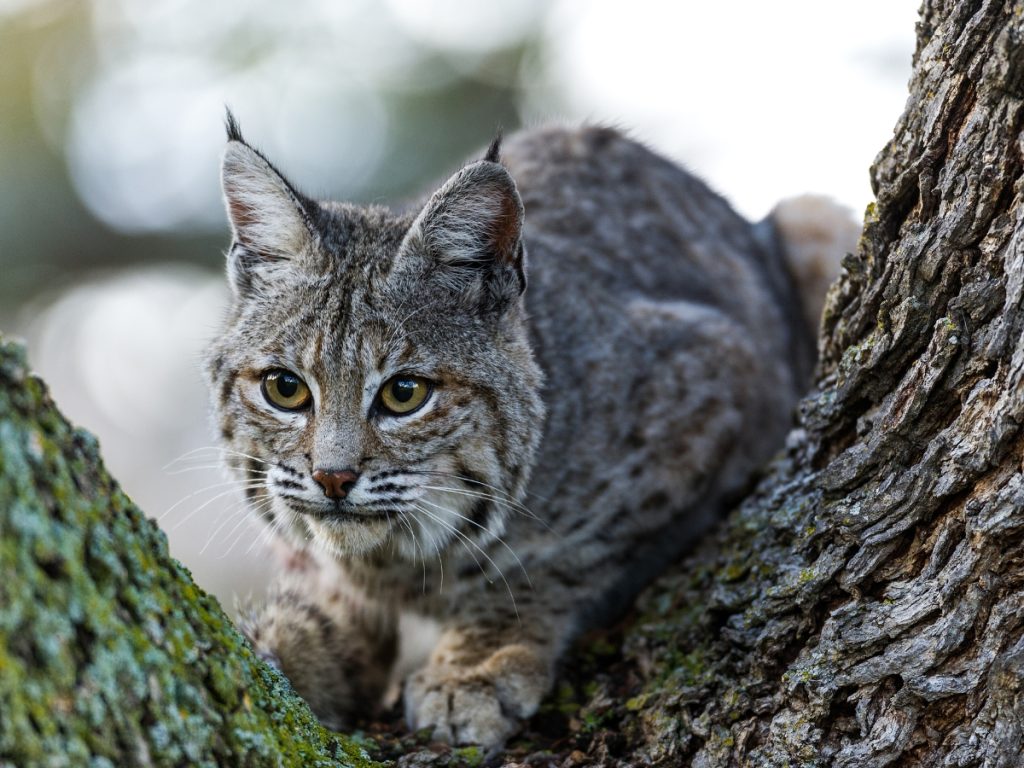
Bobcats are among North America’s most adaptable and resilient wild felines. They live from southern Canada to the Mexican border.
One of the most fascinating aspects of bobcats is their adaptability. These solitary creatures, roughly twice the size of a domestic cat, can be found in various habitats ranging from forests and mountains to deserts and suburban backyards.
Interestingly, they can leap up to 12 feet to catch prey.
A bobcat’s coat is not only marked by its color but also its pattern. The fur is spotted and streaked with dark markings, providing excellent camouflage.
Chartreux Cats

Chartreux cats are a rare and ancient breed that originated in France. These cats are recognized for their distinctive woolly fur and copper or gold eyes.
The exact origins of the Chartreux remain a mystery. Still, a legend says they were bred by Carthusian monks in the French Alps, possibly as early as the 13th century.
These cats are known for their quiet nature. So if you want a cat that doesn’t meow a lot, this is a good choice.
African Elephants
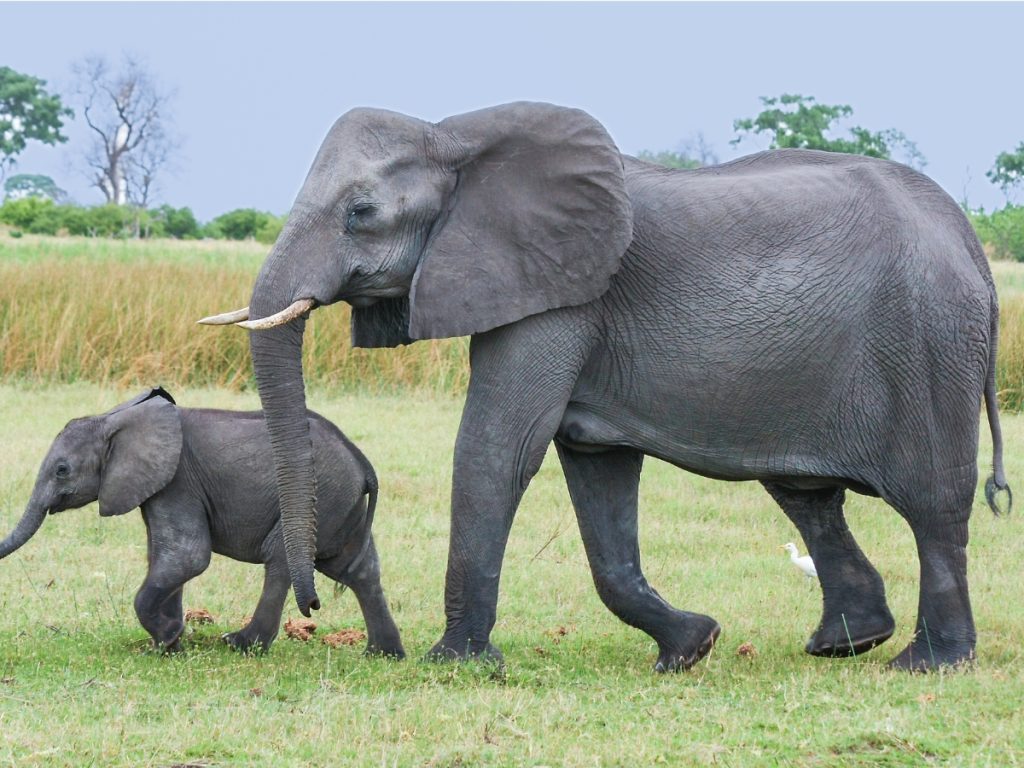
African Elephants, the world’s largest land mammals, are distinguished by their gray, wrinkled skin. There are two subspecies: the larger savanna (or bush) elephant – brownish-gray – and the smaller forest elephant – gray.
The savannah elephant can reach up to 13 feet (approximately 4 meters) in height and 15,432 pounds (about 7000 kg) in weight. In comparison, the other one is no more than 10 feet (roughly 3 meters) tall and 11,023 pounds (around 5000 kg) in weight.
In addition, the tusks of the savannah elephant curve outward, whereas those of the forest elephant point downward.
Their lifespan can span between 60 and 70 years.
Gray Whales
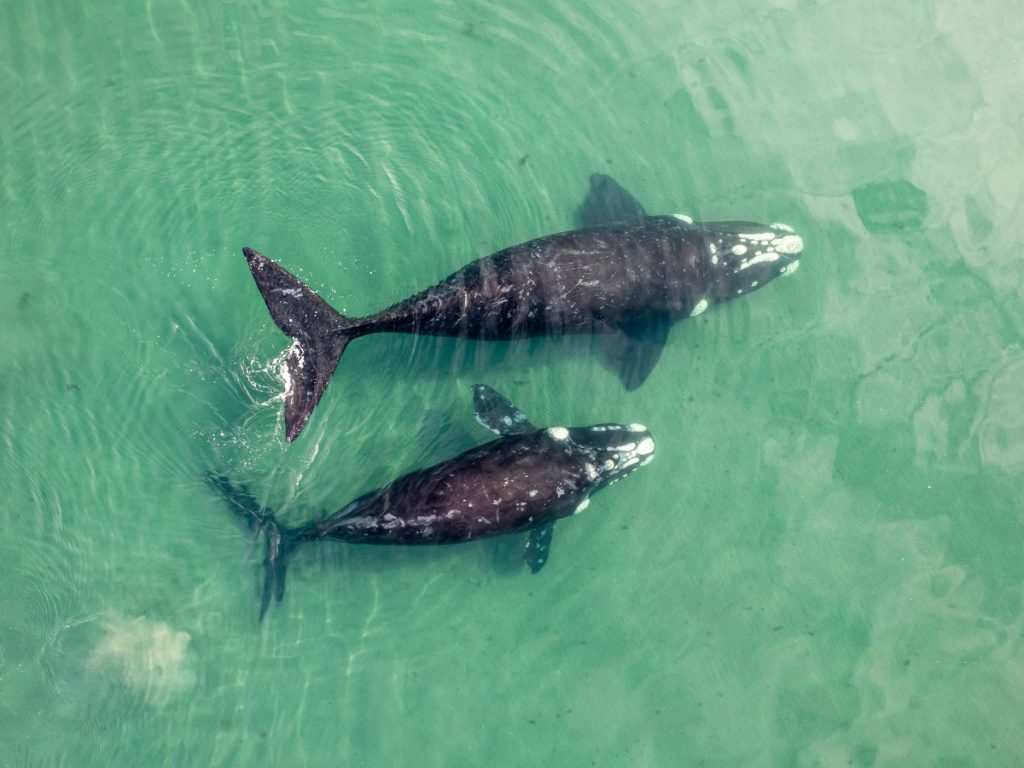
Gray Whales, named for their mottled gray bodies, are remarkable creatures known for undertaking one of the longest annual migrations of any mammal.
Native to the Pacific Ocean, these whales travel around 10,000 miles from their feeding grounds in the Arctic to their breeding grounds in Mexico.
They are also some of the largest marine mammals, growing up to 90,000 pounds (and 49 ft. long).
Canyon Treefrogs
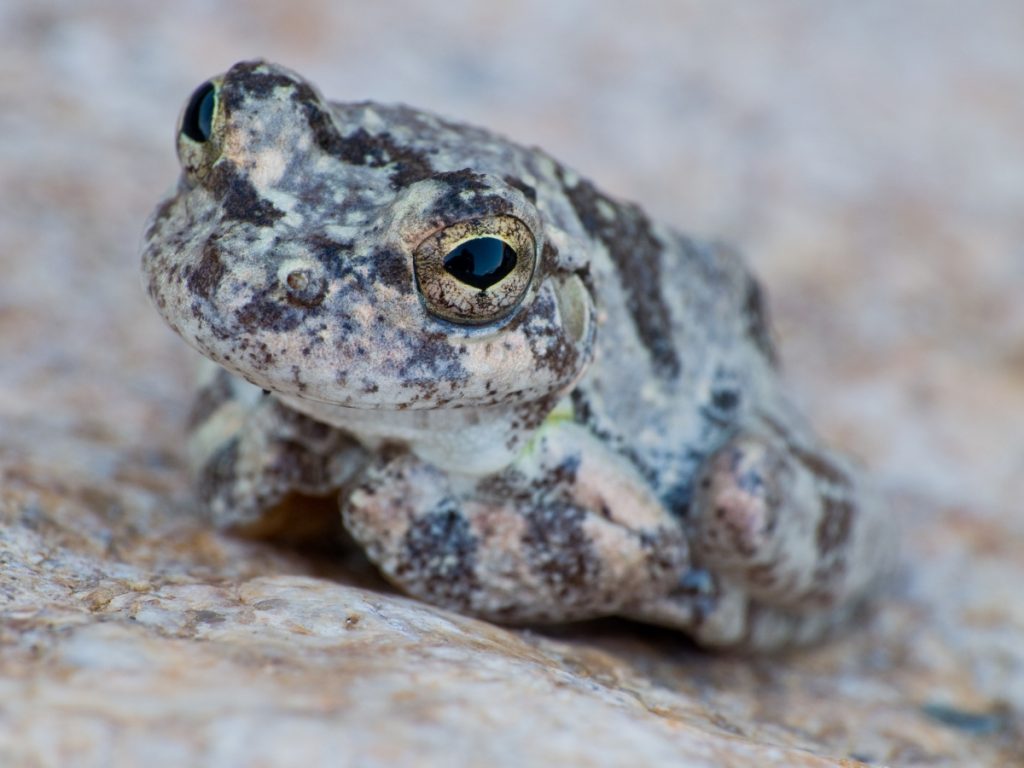
Canyon treefrogs are found in rocky, stream-side habitats in the southwestern United States and northern Mexico.
They have the ability to change the color of their skin to match their surroundings. This ability allows them to camouflage from predators.
Unlike most treefrogs, their skin is rough and warty, allowing them to blend in with the rough surfaces of the canyons they inhabit.
Despite their name, they are more likely to be found on the ground or in crevices than in trees.
Great Gray Owls
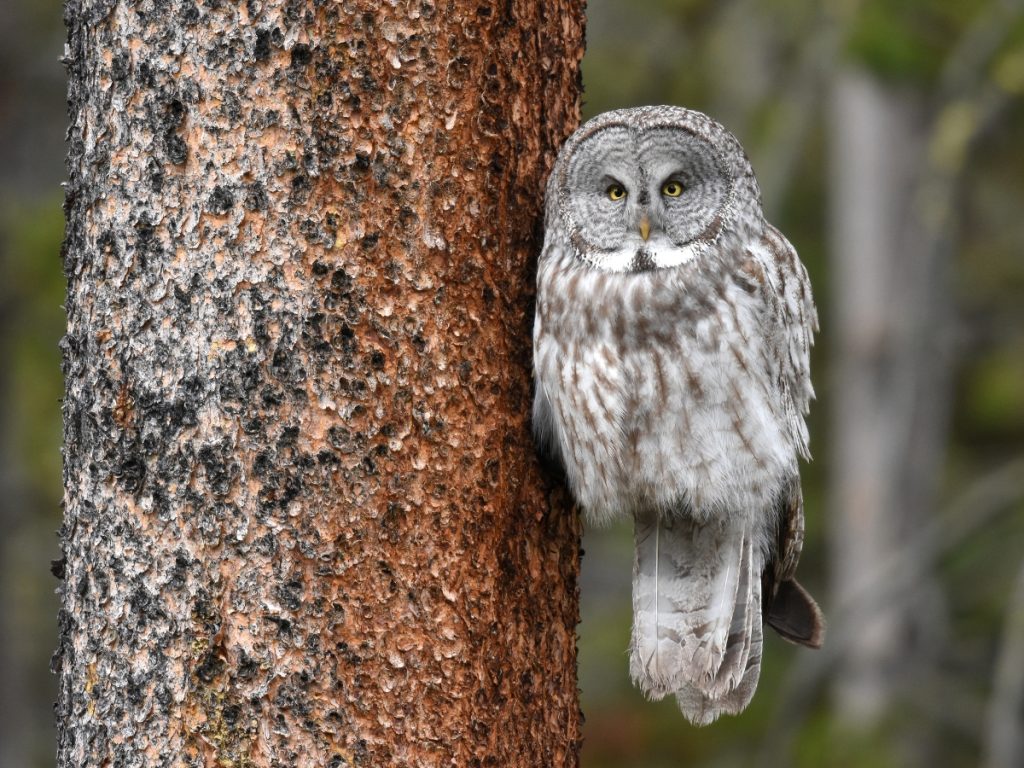
Native to the northern boreal forests of North America and Eurasia, these owls have round heads, no ear tufts, and a distinct white “bow tie” marking under their faces.
One of the most striking features of Great Gray Owls is their size. As the longest owl species in North America, they can reach up to 33 inches long, with a wingspan stretching to over 5 feet.
Also, their coloration provides excellent camouflage against the bark of trees, helping them blend into their woodland environment.
Koalas
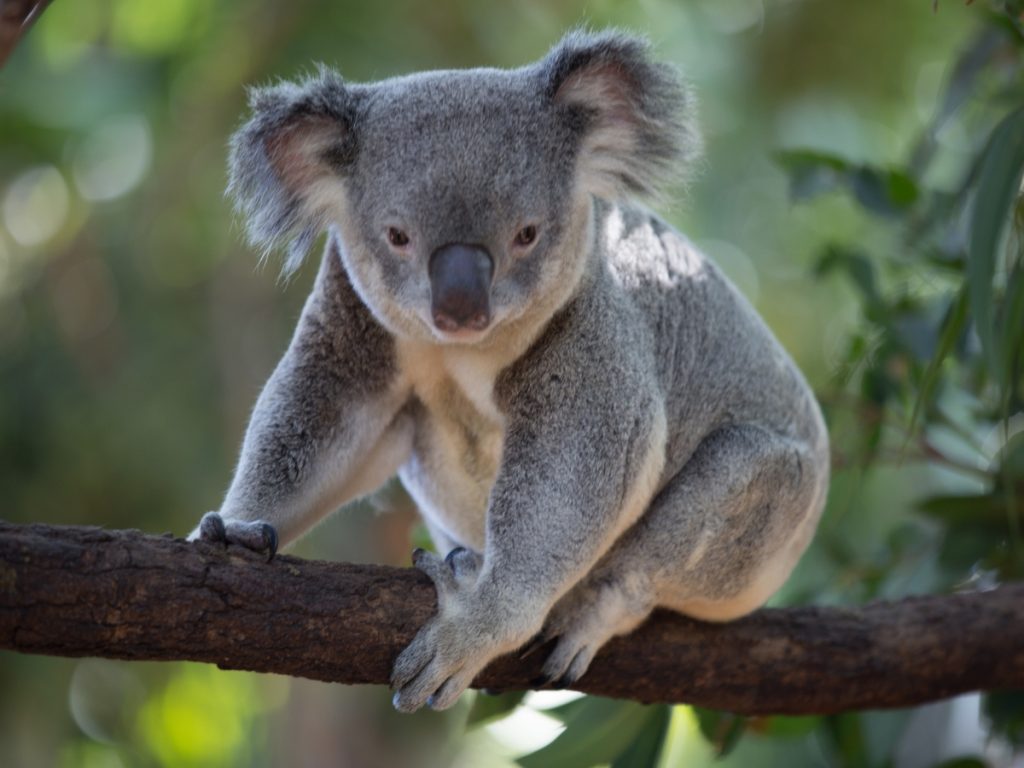
Koalas are the most adorable gray animals in the world.
Even though they have a bear-like appearance, they are not bears. Koalas are marsupials native to Australia.
The diet of koalas is one of the most intriguing aspects of them. They eat almost entirely eucalyptus leaves, which are high in fiber and low in nutrients.
Interestingly, koalas have a specialized digestive system with a long hindgut that can break down tough eucalyptus fibers and detoxify the harmful chemicals found in the leaves.
Moreover, they live sedentary lives and are known to sleep up to 20 hours per day, which helps them conserve energy due to their low-nutrient diet.
Chinchilla Rabbits
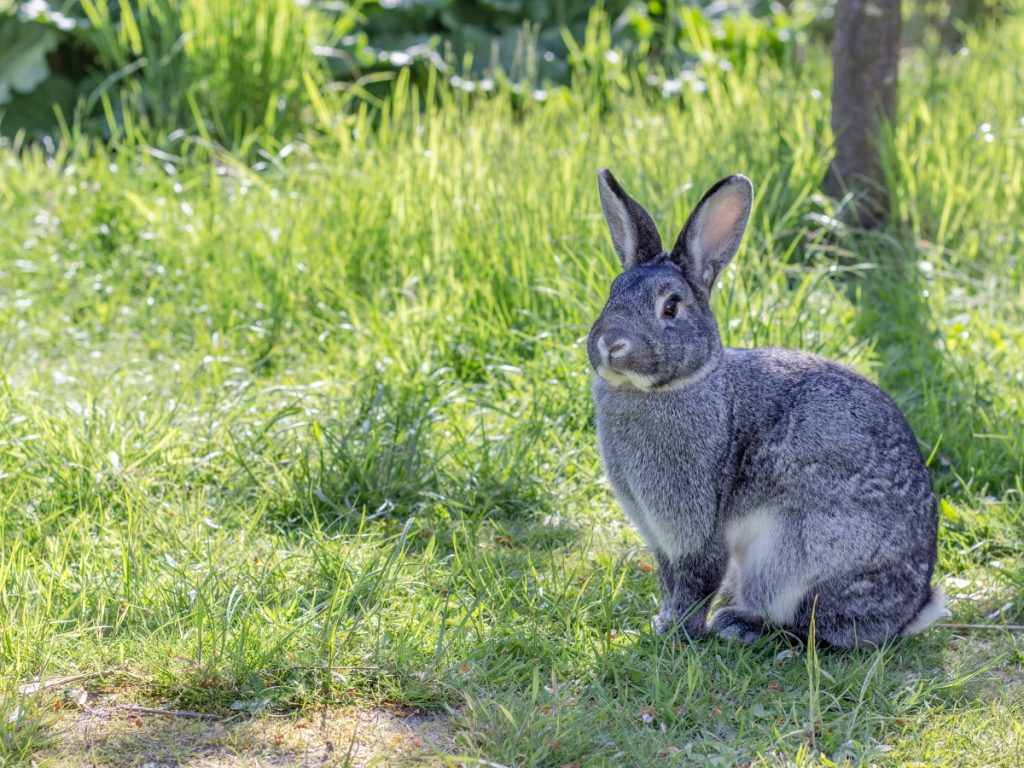
These gray rabbits, which have dense fur similar to the South American Chinchilla, are a popular breed among rabbit enthusiasts.
This breed, which originated in France in the early twentieth century, gets its distinctive gray coloring from a genetic trait known as the chinchilla factor. This trait dilutes the color of its fur, giving it a silvery-gray appearance.
They are medium to large in size, weighing 5 to 7.5 pounds on average. Despite their massive size, they are known to be gentle and easy to handle.
Rock Pigeons
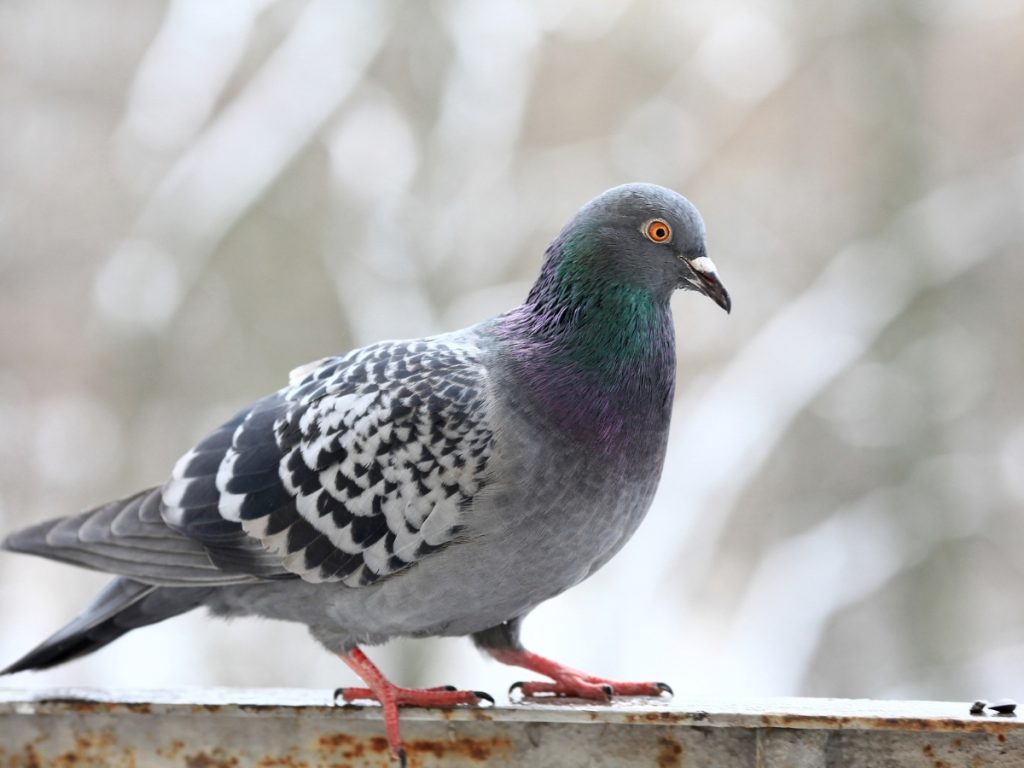
These pigeons are one of the most widespread non-domestic birds, which is a non-migratory species. Thus, they are some of the most familiar birds in urban landscapes worldwide.
They are medium-sized gray birds with two black bars on their wing feathers. The feathers on the neck are a combination of purple and blue. Also, they have a black band on their tail.
Moreover, they get their name from their preference for rocky cliffs as nesting sites in their native habitat.
One of the fascinating aspects of rock pigeons is their incredible homing ability. They can navigate back to their nests over long distances, a trait humans have harnessed for thousands of years.
However, these pigeons make a lot of mess.
Demoiselle Cranes

These gray birds, which are native to parts of Eurasia and North Africa, are the smallest of all crane species. They are known for undertaking one of the most difficult migrations, flying at altitudes of up to 26,000 feet over the Himalayas.
Because of their delicate and maiden-like appearance, these cranes are called ‘Demoiselle’ (French for young lady). Queen Marie Antoinette gave them this name after they were brought to France (from Russia).
They appear in many cultures’ mythologies. In Mongolia, for example, they are regarded as symbols of eternal love because these cranes are monogamous and are believed to pine away and die when separated from their partners.
Zero Morph Bearded Dragons
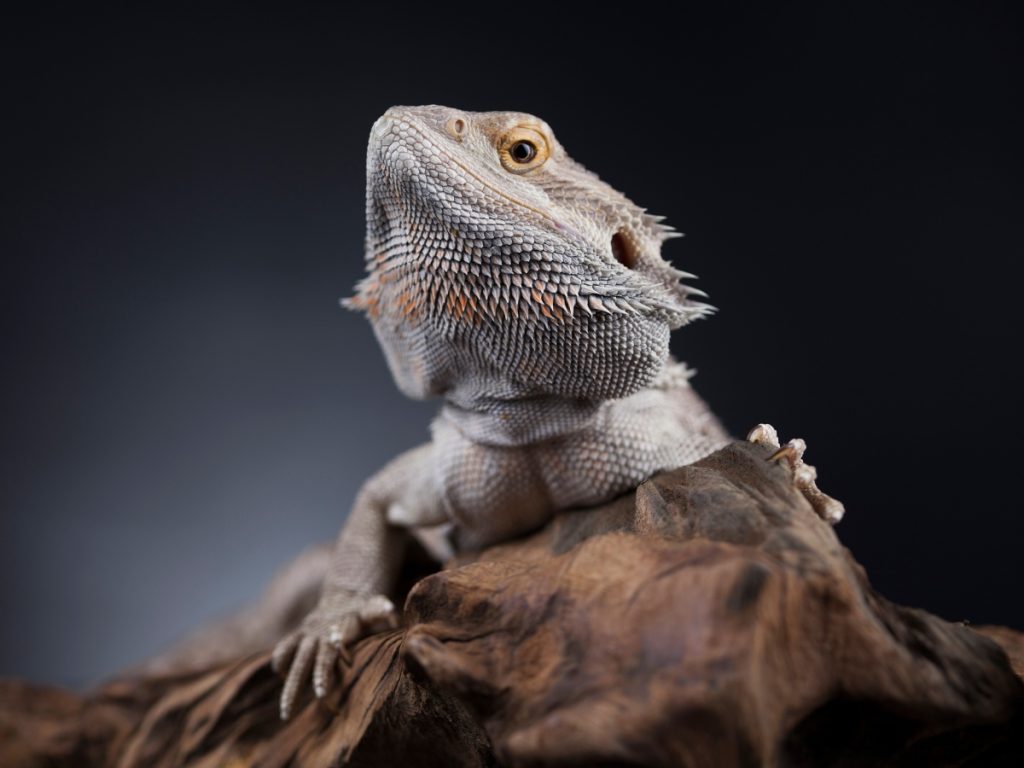
These bearded dragons are a fascinating variant of the well-known Pogona vitticeps species, distinguished by their stunning, patternless gray-to-white scales.
The term “Zero Morph” refers to the absence of markings or patterns on their skin, which distinguishes them from other Bearded Dragons.
These colorless dragons are native to Australia. They are easy to care for, which is why they have grown in popularity.
Despite being morphs, they feature a gray gradient and are one of the few completely gray reptiles.
Gyrfalcons
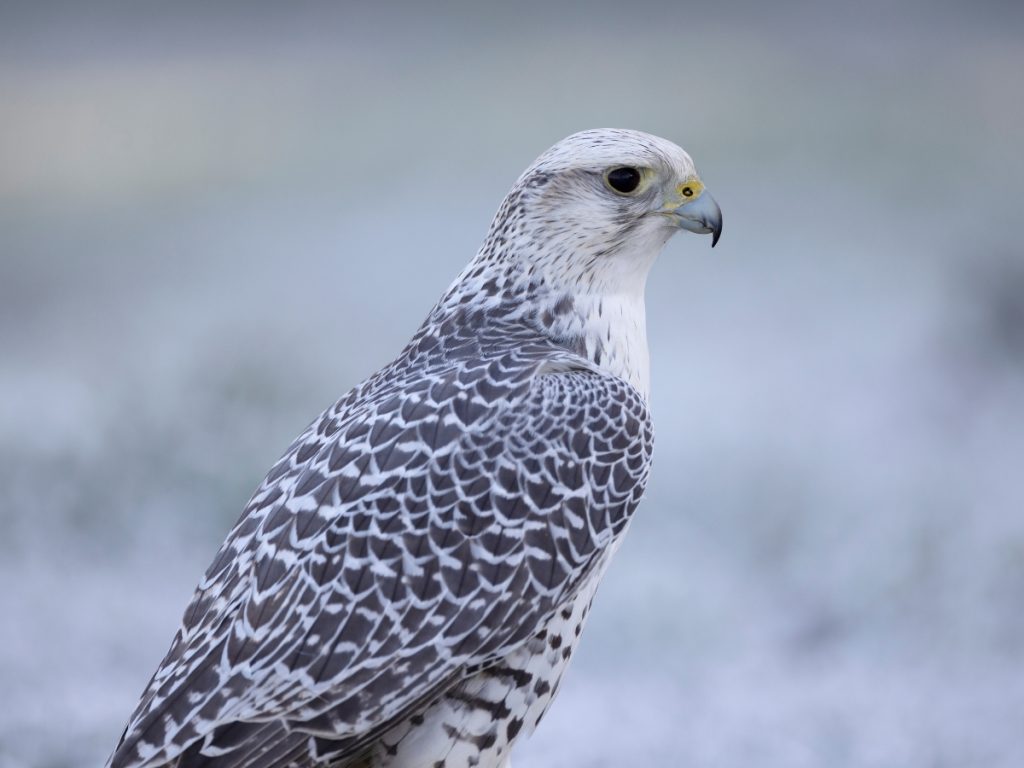
This is a perfect example if you’re looking for white and gray birds.
Gyrfalcons are the largest falcons in the world. These birds are native to the arctic regions of the Northern Hemisphere, where their gray-to-white plumage allows them to blend into the snowy landscapes.
Mississippi Kites
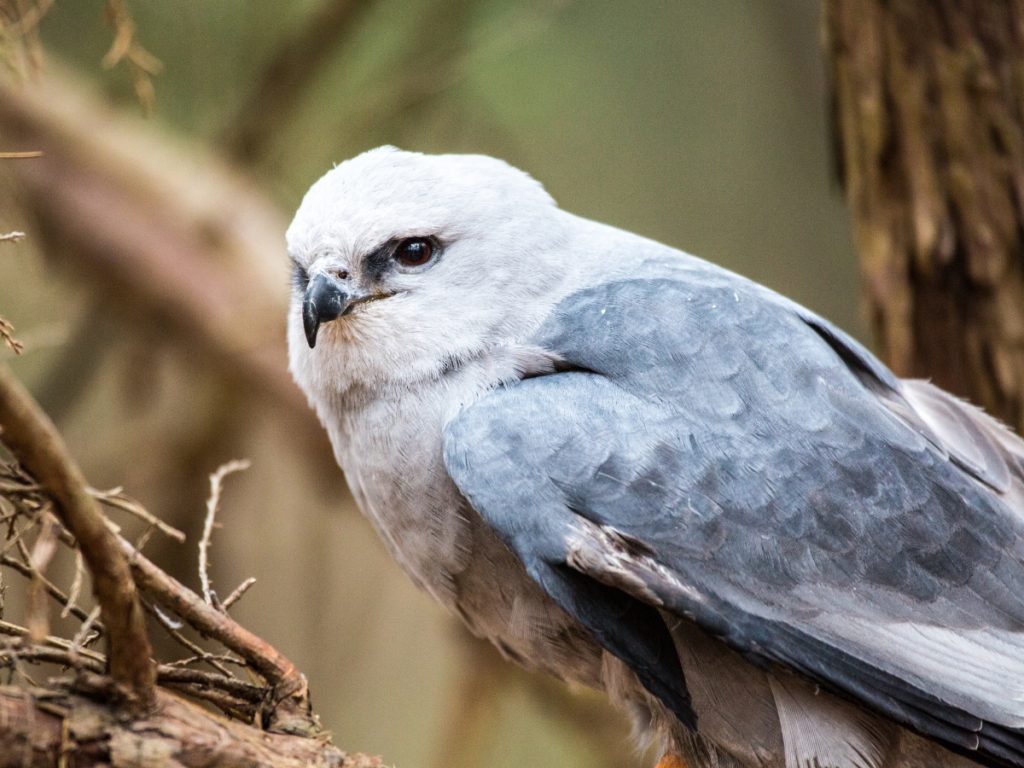
These medium-sized birds, named after the river where they were discovered, are admired for their graceful flight and sleek grayish-blue plumage.
These birds primarily inhabit the central and southern regions of the United States during the breeding season, then migrate to Central and South America for the winter.
Adult Mississippi Kites are predominantly gray with a slightly paler head and underparts. The tail and the area around their eyes are black.
These gray and black birds grow to 12 to 15 inches (30-37 cm) and have a wingspan of 3 ft. (90 cm).
Gray Squirrels
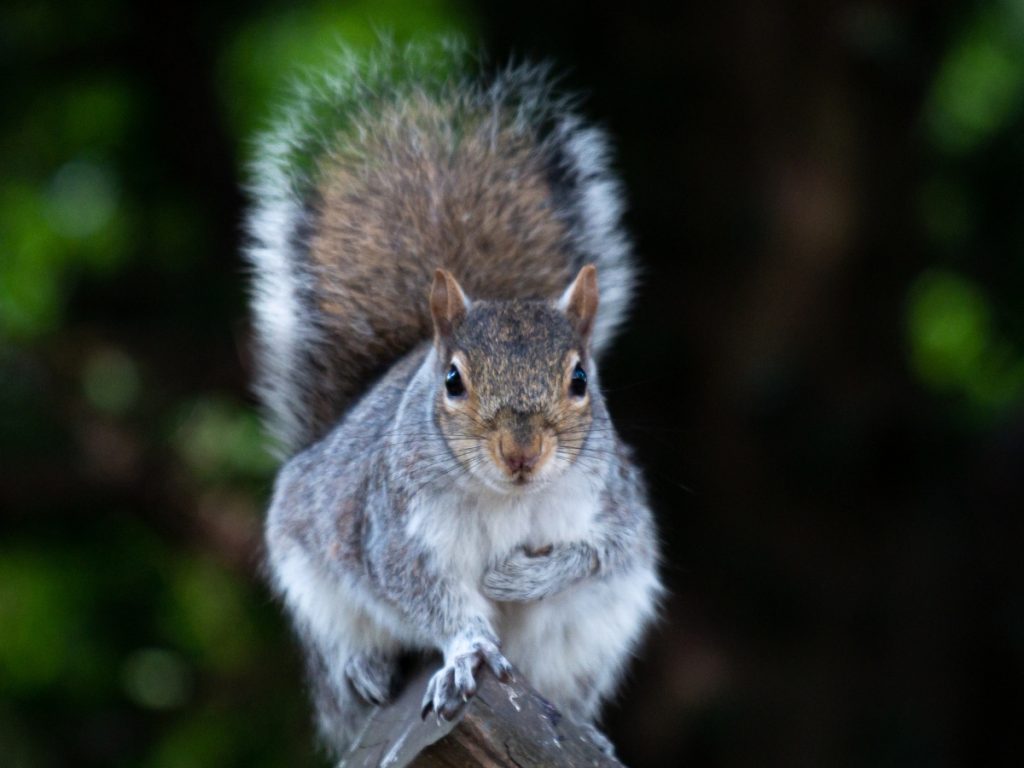
Gray Squirrels, known as Sciurus carolinensis, are cute mammals native to North America. They are among the most beautiful gray animals.
They have a gray coat with brown flecks, complemented by a white underbelly.
Interestingly, seed dispersal is a significant ecological function they perform through their food-hoarding behavior, which frequently results in forest regeneration when they forget their buried food caches.
Gray Plants
Silver Brunias
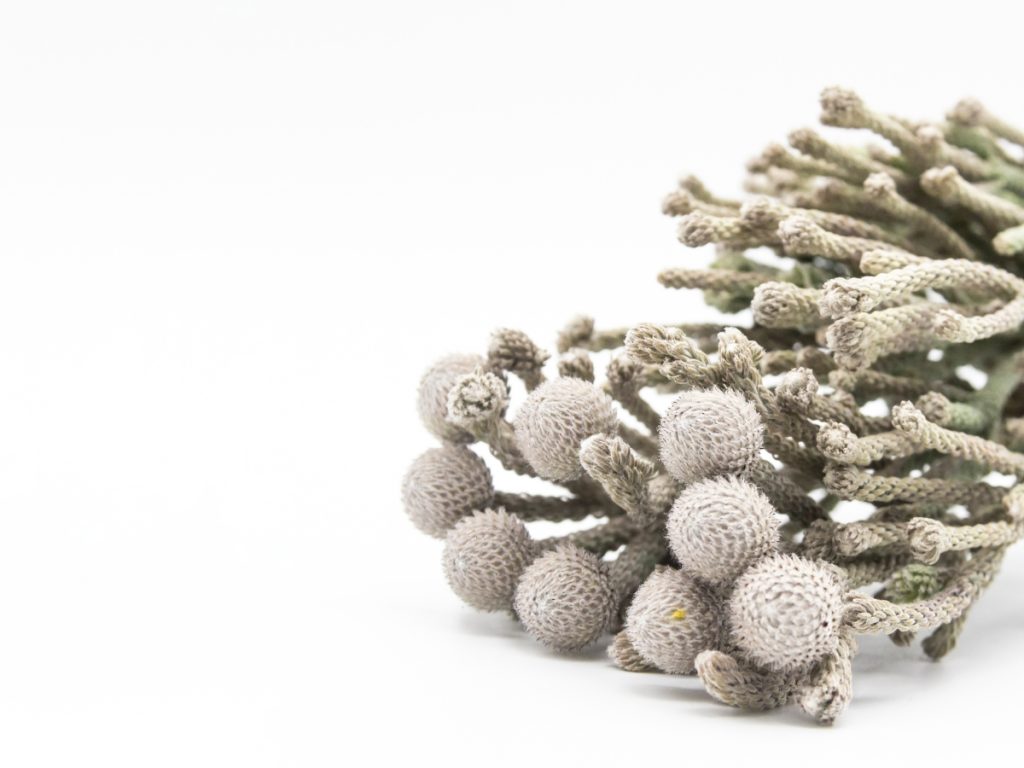
These captivating shrubs native to South Africa feature spherical flower (or berries) clusters with silver-gray color.
They are definitely among the most beautiful gray flowers! That’s why they are often used in wedding flower designs.
These evergreen shrubs are part of the Brunia family and thrive in the Mediterranean-like climate of the Western Cape.
They grow best in well-drained soil and sunny weather. Their drought tolerance makes them a popular choice for low-water gardens.
Silver Sage
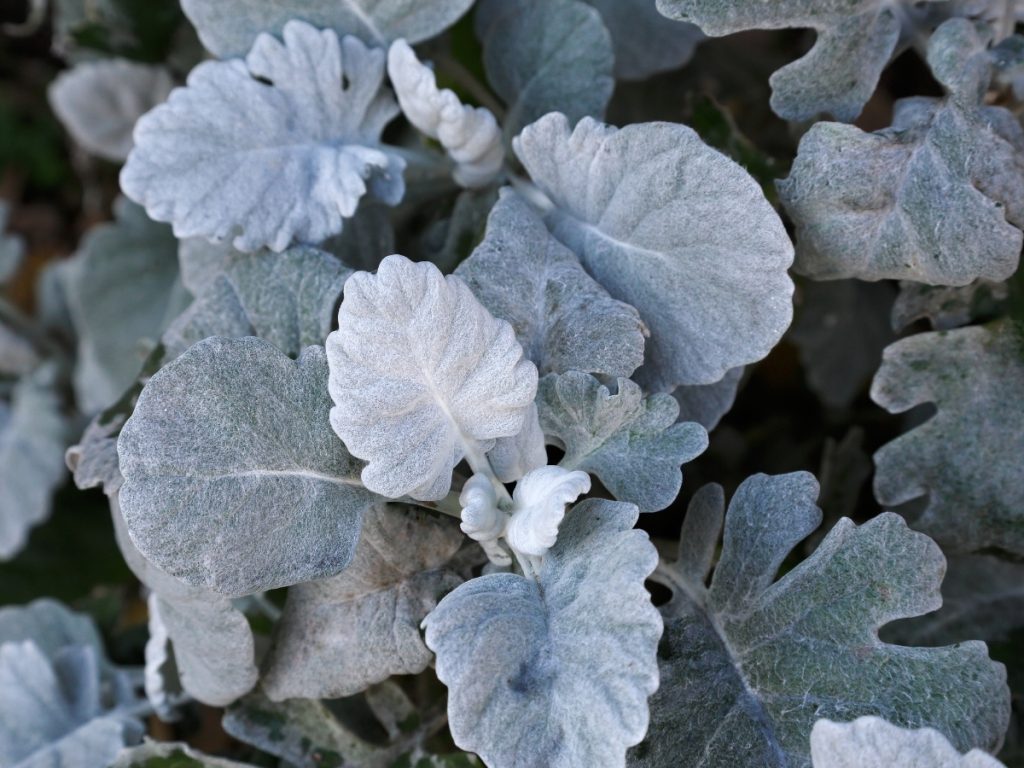
Silver sage is a perennial herb prized for its silver-gray leaves. Also called Salvia argentea, this is just one of over 900 species of salvias.
This is native to the dry grasslands of southern Europe (eastern Mediterranean) and West Africa.
Interestingly, their leaves are green but are covered with fine, silvery hairs that give them this spectacular grayish-green color.
If you like gray-green, then silver sage is for you. This color is also popular in interior design.
Cushion Bushes
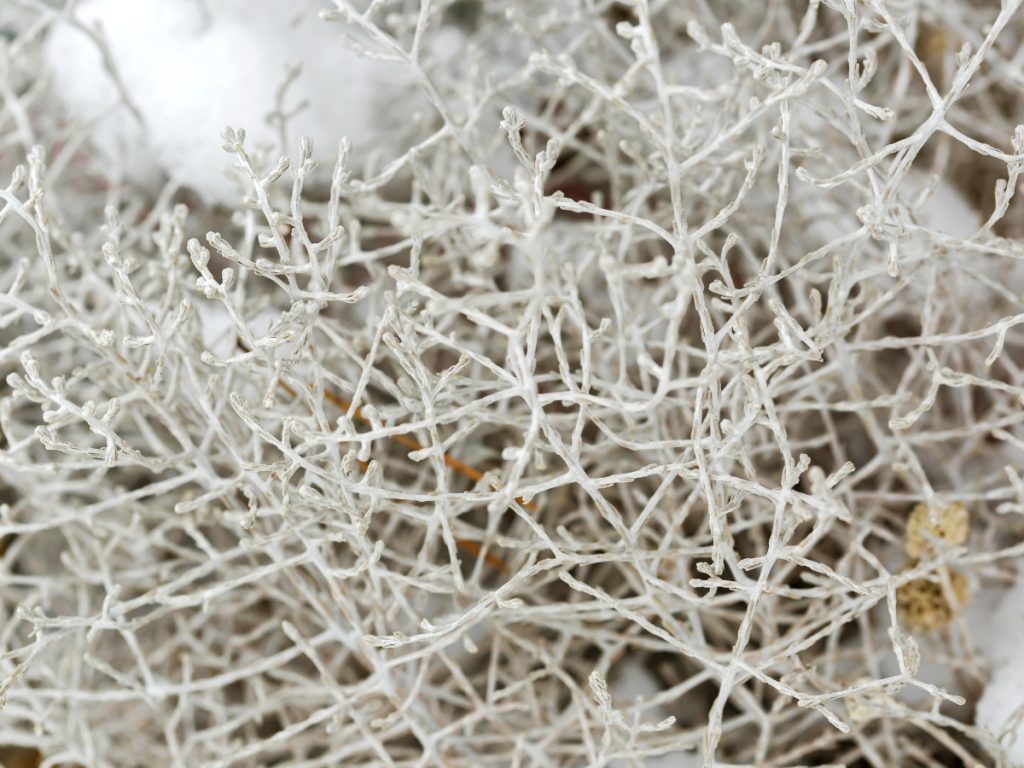
Here is another silvery-gray plant, also known as Leucophyta brownii. These silvery-gray plants, also known as silver bushes or Leucophyta brownii, are native to Australia’s coastal regions.
This small plant displays silver-green needle-like leaves.
Native to Australia, this plant is drought, salt-tolerant, and unpretentious.
Moreover, their small, yellow flowers bloom in summer and subtly contrast the gray leaves.
Their gray appearance and resilience remind you of nature’s ability to adapt and thrive even in difficult conditions.
Things that are gray in nature
Although this list is not as long as other colors, we hope we have given you an idea of the plants, animals, and other gray things out there.
Did we forget to mention something? Leave us a comment, and we’ll update the list.
Did you like this list of things that are gray in nature? Help us spread the word. Share this article with your friends who might be interested.

